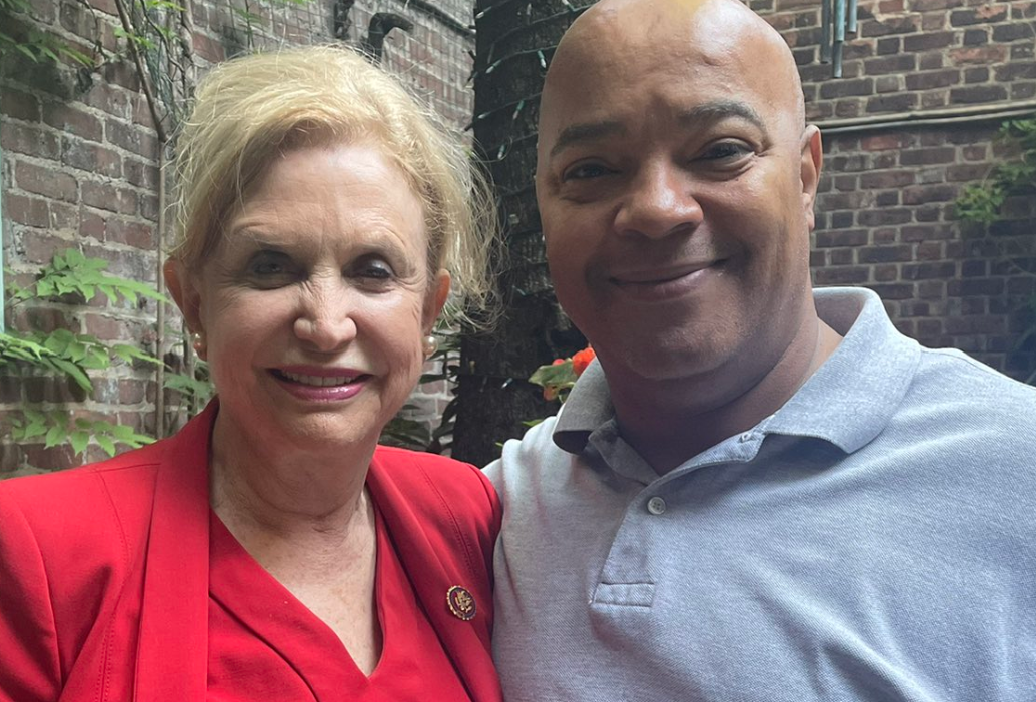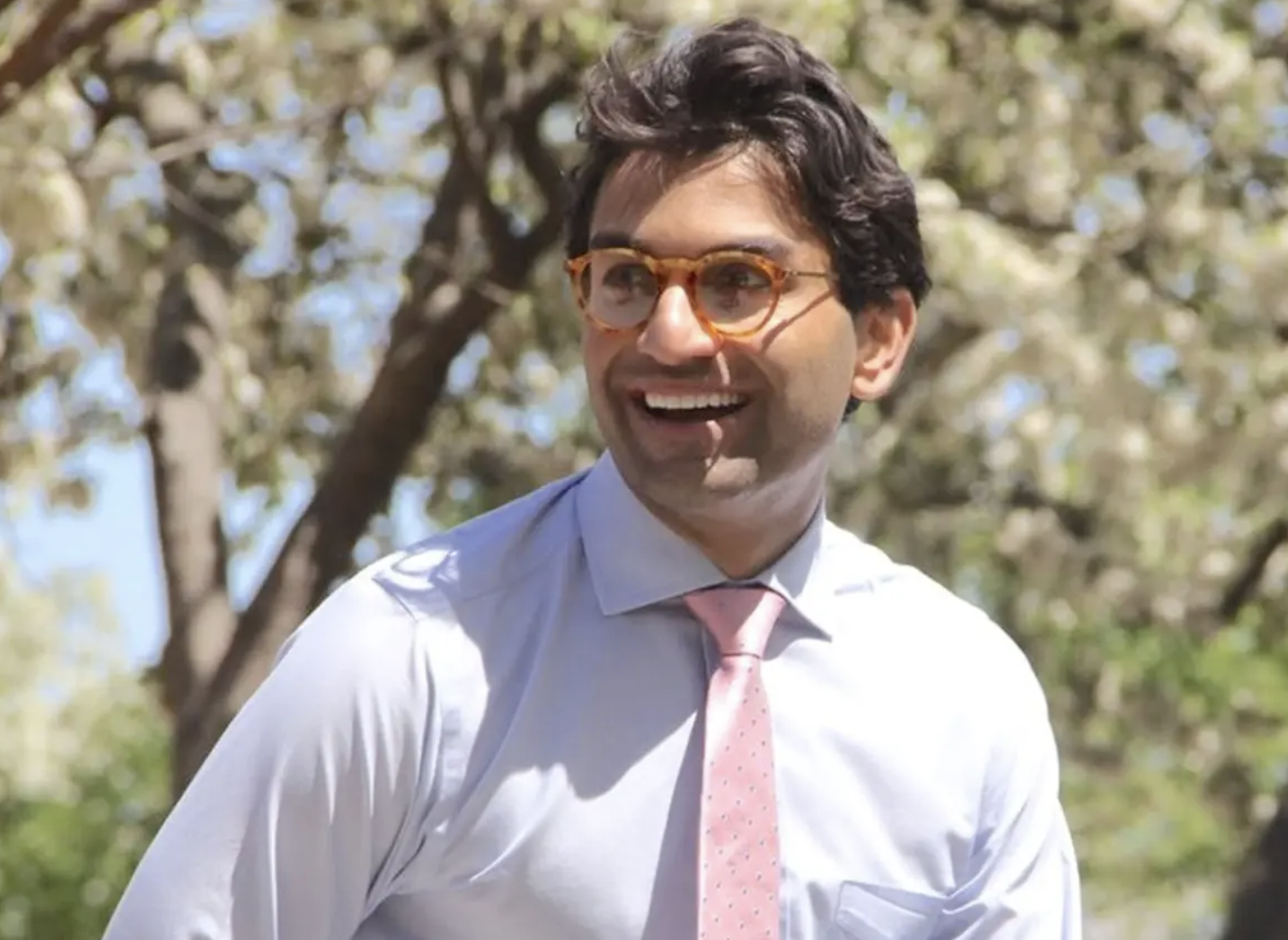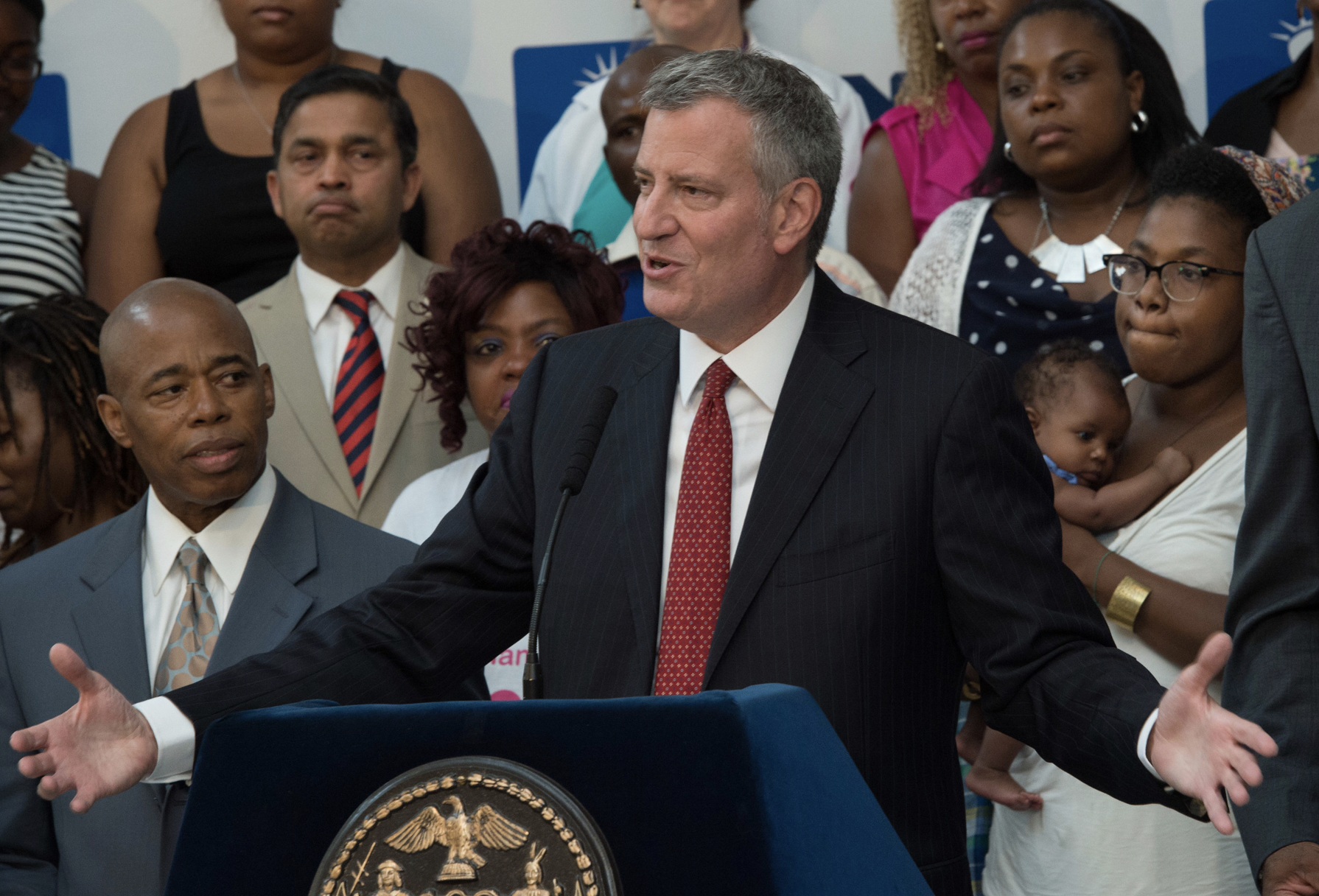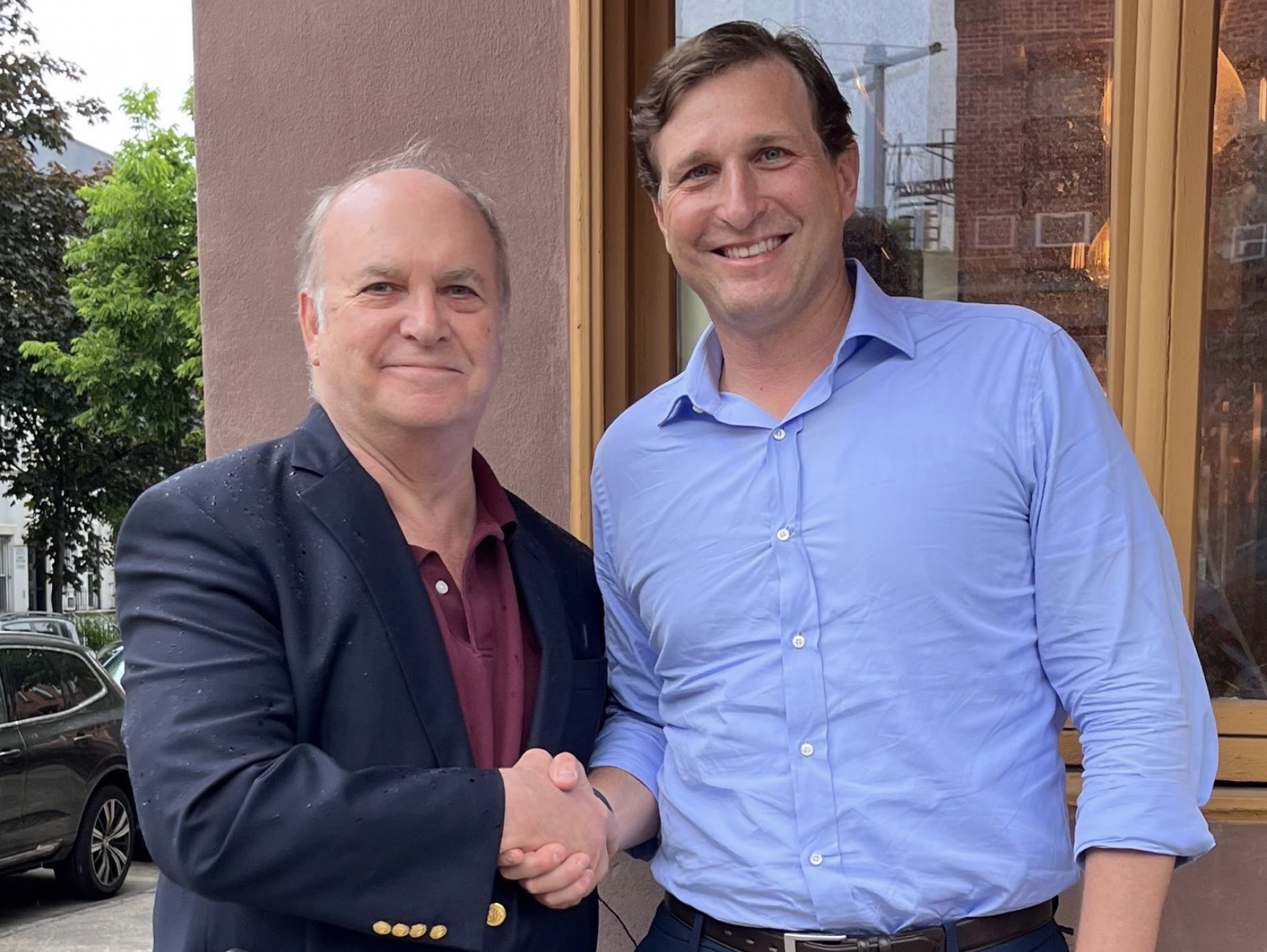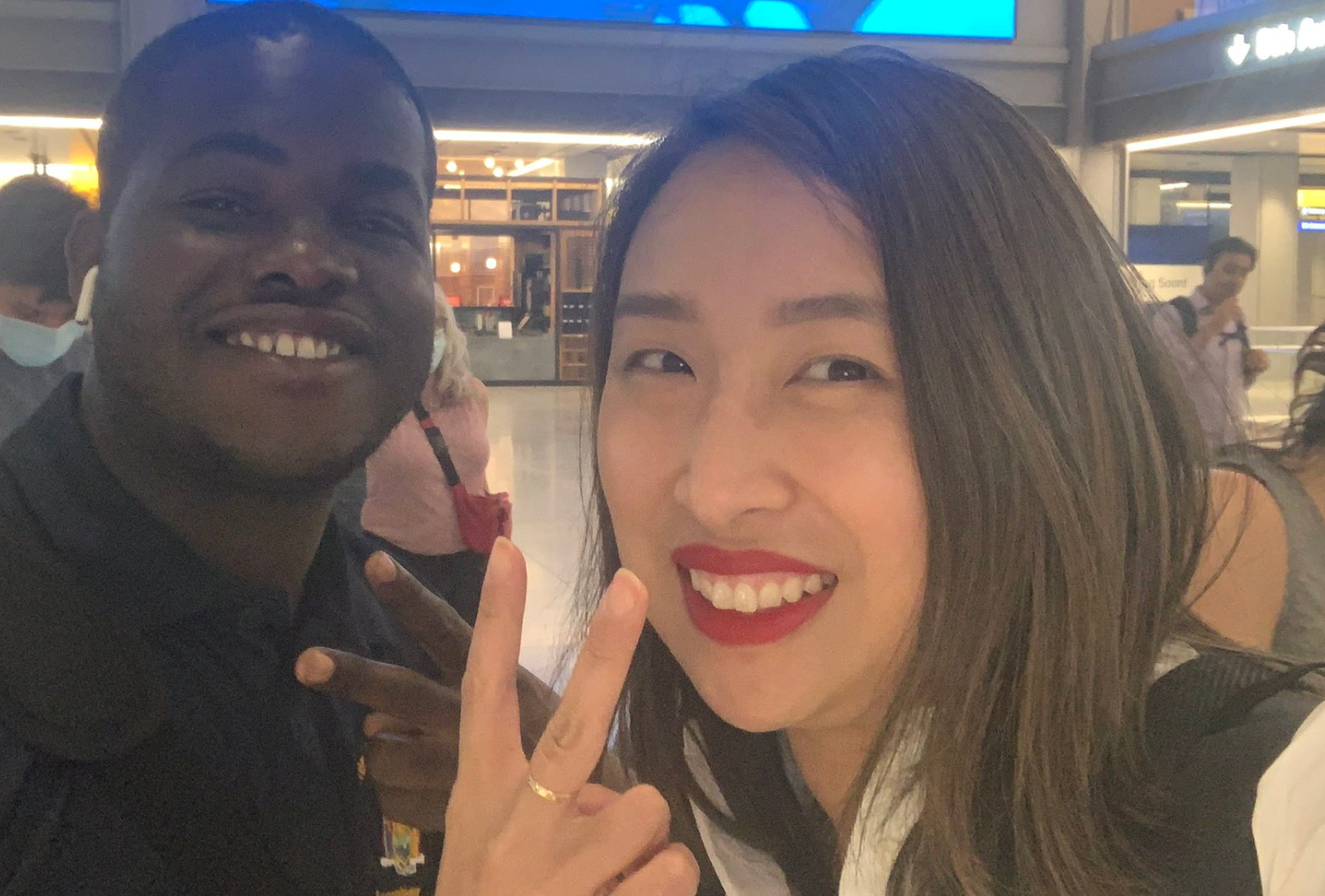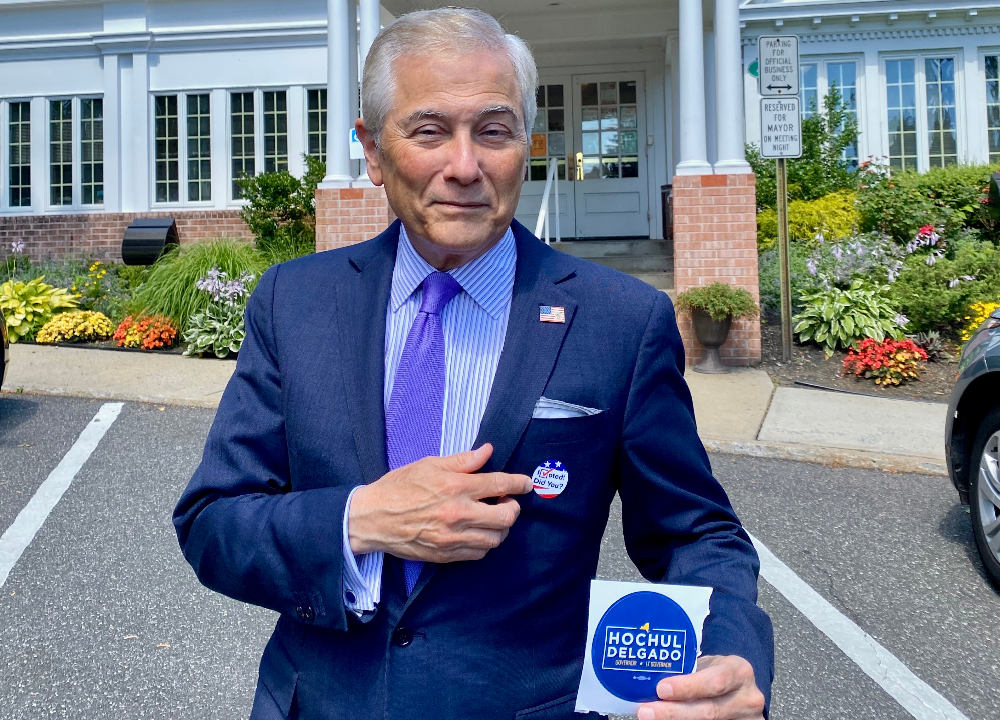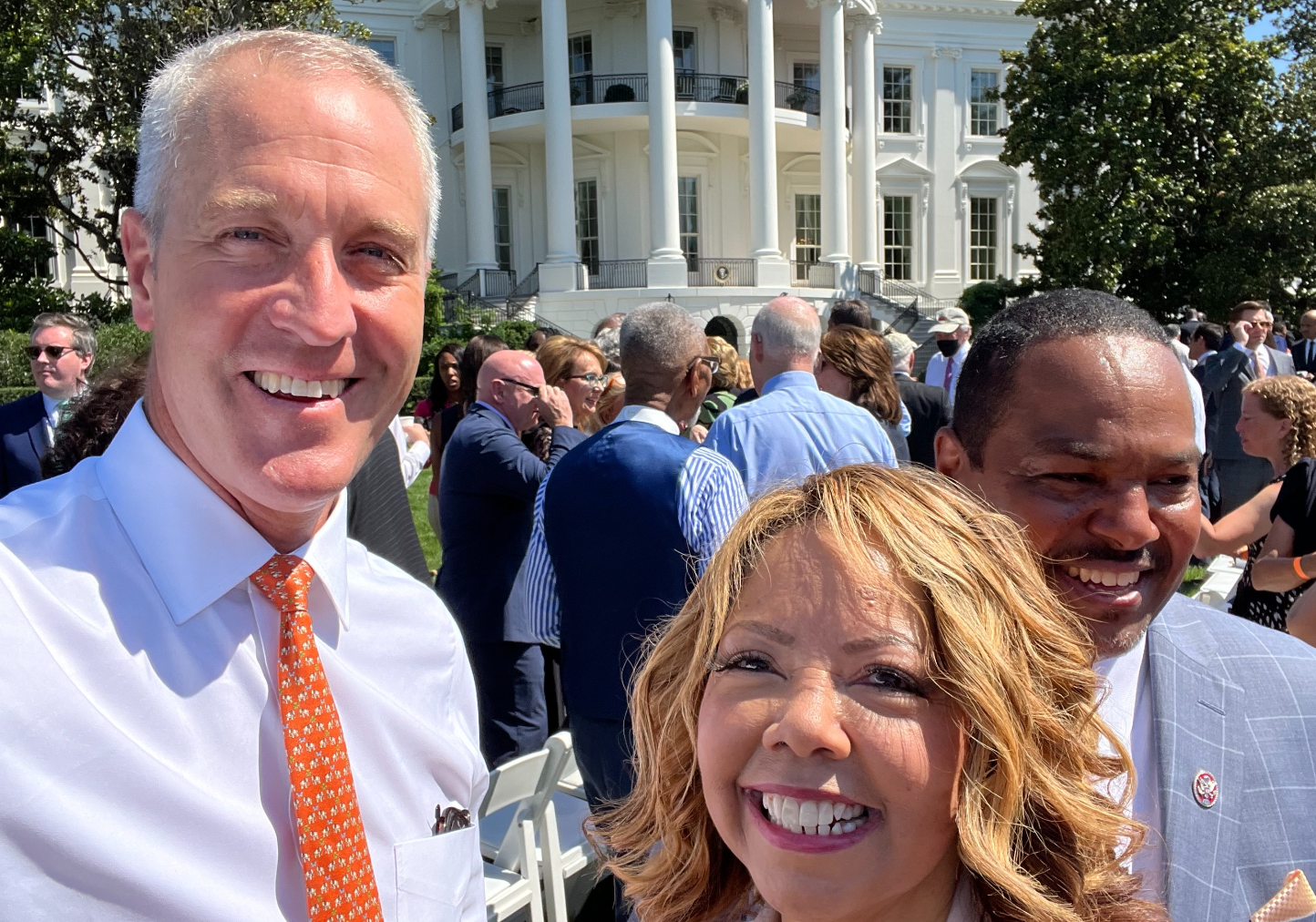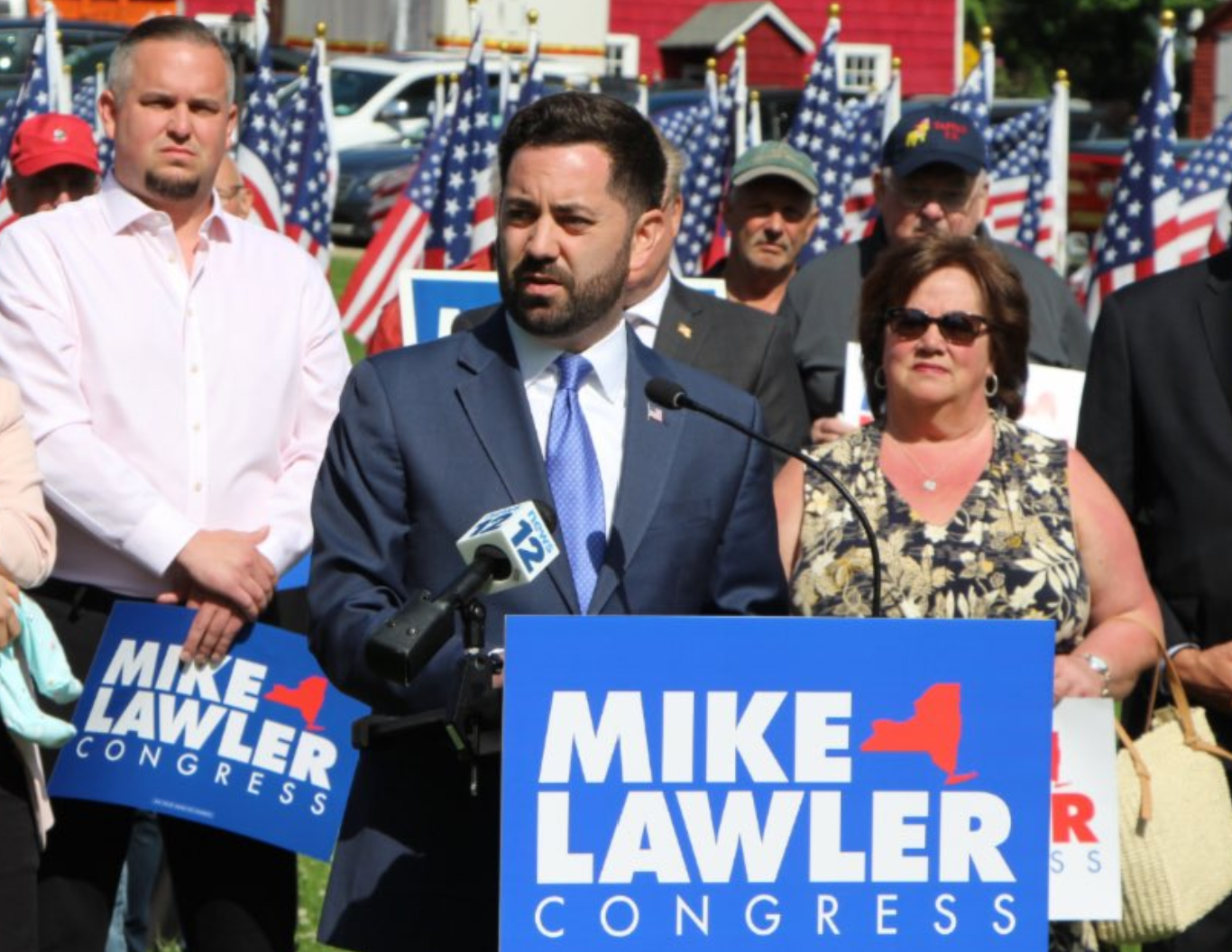A Cheat Sheet for Handicapping the Congressional Primaries in NYS Worth Watching
New York State has a bushel basket full of congressional primaries in both parties coming up on August 23rd. This column is designed to provide a cheat sheet for the early handicapping of the most consequential primaries. Forgive me for not parsing all the congressional primaries, as I am leaving out of this analysis the primary contests where the outcome is not likely to impact the eventual outcome in November. Most importantly, it is too soon to forecast the outcomes with any precision, but it is not too early to project the factors that will probably determine the outcome in these key primaries.
There are three marquee primary races. For the Democrats there are two such contests: in the 10th (Manhattan and Brooklyn) and the 12th (Manhattan’s East and West Sides) Congressional Districts(CD’s). The Republicans have a heavyweight contest in the 23rd CD (in Western New York). Meanwhile, there are some other primary races from both parties around the state worth charting, precisely because their outcome could impact the outcome of the all- important general election campaigns.
The first factor to consider is turnout. We have never had a primary day smack dab in the middle of the dog days of August, in the prime of vacation season, as well as the hectic week before many families have to get college aged children off to school. Consequently, we have no empirical template to project TO for an August 23rd primary. Nor do we know how much of a factor early voting and absentee voting will be in these primaries. For example, would a renewed surge of a new Omicron variant lead to a relatively heavy use of absentee voting or will the absentee ballot percentages shift downwards toward their pre-pandemic range of only 4-7% of the total primary vote? We just don’t know those answers.
Conventional wisdom now holds that these primaries will be low turnout (TO) affairs. That may be correct, but what I suspect will happen is that the TO pattern will not be linear, which is to say it will not be the same across the board. Instead, I suspect that TO will track the intensity or lack thereof in each primary race, reflected in the media coverage and derivatively how important voters think every primary is to their interests and concerns.
Therefore, it would not surprise me if the TO was surprisingly high in the Democratic primaries for 10th and the 12th CD’s, anchored in Manhattan and Brooklyn(traditionally the highest voting counties in Democratic primaries) and in the Republican primary in Western New York’s 23rd CD, between Carl Paladino the GOP’s 2010 candidate for Governor and current Republican State chairman Nick Langworthy. All three of these primaries will see a lot of media coverage, a huge amount of candidate spending, perhaps supplemented by significant Independent Expenditure (IE) spending, tied to voters knowing that the winner of all three of these primaries will be elected to Congress in November.
Alternatively, some of the other primaries in the Downstate New York media market may be important table setters for the general election races to come, even as they may not generate as much media interest and hence TO in these primaries could be low. Let’s begin by charting the marquee contests.
The contest in Manhattan’s 12th CD is the easiest to analyze, but the toughest to predict. This race pits two well- liked and respected Democratic incumbents, each with decades of service in the house: Jerry Nadler from the West Side and Carolyn Maloney form the East Side, against each other. This is a contest where neither of these candidates nor their constituents wanted to see occur. More of the district’s population comes from Maloney’s East Side base, but TO tends to be higher in Nadler’s West Side base. So where the TO actually comes from in this primary will become a key factor.
There is also a well- funded third candidate in this race, Suraj Patel, an Indian American from humble roots, whose family made a fortune in the Hotel business. Patel has political chops as he worked for the Obama administration and ran against Maloney in the 2018 and 2020 primaries. Patel came close to beating Maloney in 2020, but his strength was in the prior district’s rather substantial Queens and Brooklyn pockets not on the East Side.
Patel is a self-funder and an experienced candidate and while he will not win this primary, he could be an important factor, based on where he draws more votes: from Maloney on the East Side, where he is better known, or where he is trying to get known in Nadler’s West Side base? From the recent profile article in the Times, it is clear Patel is aiming his verbal bullets far more at Maloney than Nadler. But Patel’s motive is less significant in electoral terms, than where he draws his votes from, which puts who Patel hurts more Maloney or Nadler, in the voters’ hands.
Much has been made in this race as to whether women voters, who will cast a clear and majority of the district’s Democratic primary vote, will gravitate towards Maloney, or whether Jewish voters, who make up a large share of the primary electorate in this district will break for Nadler, as he is the last Jewish member of the House from the current make- up of the NYC delegation. In practical terms, the fulcrum point for that electoral tension will likely come down to who Jewish women will vote for in this primary? This actually points us towards the larger dynamic that will determine the winner of this primary. The voters in this district are what political scientists call cross-tugged. The overwhelming number of Democrats in this district not only respect the public service of both Nadler and Maloney, they like both of them. How will these cross tugged voters resolve this dilemma?
I don’t think any pollster can easily measure this, so I found the late May Emerson poll for PIX 11, showing Maloney ahead of Nadler by 10% (31-21%) interesting but not dispositive. I can foresee these cross tugged voters, especially but not exclusively Jewish women, changing their minds multiple times over the last month of this primary campaign. They will functionally balance and weigh Maloney’s energy against Nadler’s gravitas.
I would not presume to know the answer on who wins this contest. But given the age and education of the primary electorate in this district, I suspect that whoever the Times editorial board endorses will win this primary. In a race like this one, where voters know the stakes are important, they will want a Good Housekeeping seal of approval to resolve their feeling tortured by the choice they have to make. In this older and highly educated district (regardless of age), who reads the Times either in print and on line. I think the Times endorsement will set off a late but strong current of support that acts as a high tide for whoever earns the endorsement.
In effect, the Times endorsement in this race will rival in impact on the outcome, what the endorsement of Tweed and Boss Murphy meant in the heyday of Tammany. To further complicate the picture I do not see how anyone outside that Times editorial board can predict who will get that endorsement. Not to mention if the Daily News ends up endorsing the same candidate as the Times, it will likely be game over(just as the Daily News joining the Times in endorsing Kathryn Garcia for Mayor last year turbo charged her campaign, and nowhere more clearly than in the neighborhoods of the new 12th CD).
This will not be a function of a power play by the Times ed board, instead it will be the result of a deep yearning by a huge swath of voters for a trusted whisper to resolve their internal conflict over who to vote for. In truth, the Times ed board is the most trusted voice in this district.
The race in the 10th CD, is murkier because it is not only an open seat, but it is in effect a new seat. In addition, there are now by my count 12 active candidates with at least 6 serious candidates (Yuh-Line Niou, Carlina Rivera, Dan Goldman, Mondaire Jones, Jo Anne Simon and Liz Holtzman), now that Deblasio has dropped out of the race (although the former Mayor will remain on the ballot)which does not mean the less viable candidates will not play an important role in the outcome of the race.
The conventional wisdom surrounding this primary campaign has changed dramatically from when the new reapportionment lines were approved. Back then DeBlasio was the clear front runner, whose name recognition was expected to enable him to build a coalition between the Brownstone Belt neighborhoods in the Brooklyn end of the district and the diverse Manhattan neighborhoods ranging from upscale in Battery Park to the gentrified pockets surrounding Chinatown and the Lower East Side. According to this conventional wisdom, right behind DeBlasio in the top tier, was Mondaire Jones, parachuting in from the northern suburbs with lots of charisma, with a presumed lock on the progressive vote (e.g., the WFP endorsement) and LGBTQ support (as Jones was a prominent LGBTQ member of the House) with just shy of $3million in his federal campaign account.
The early Emerson poll taken for PIX 11,released on May 26th, revealed the prospect of torpedoes aimed right at both DeBlasio and Jones, which both proved unable to avoid hitting them midships. For DeBlasio the torpedo that hit his prospects, was the gap between those that rated his mayoralty favorably it was 21% favorable (while 64% who rated his mayoralty unfavorably), but only 6% were willing to say they would vote for DeBlasio in this primary for Congress. If 15-18% had been willing to vote for DeBlasio, he might have had a chance in this large field, but starting at only 6% who would vote for him with just about 2/3rds of the district rating him unfavorably, left DeBlasio with no real base and little room to grow. The most recent polling done by Data for Progress showed DeBlasio at 5%, while the WFP poll put him at only 4%. No surprise therefore when he pulled out of the race on July 19th.
For Mondaire Jones, the torpedo that his campaign was the carpetbagger issue. That early Emerson poll showed that 87% of the district’s voters felt it was important live in the district to serve in the House (58% felt it was very important, 29% somewhat important, while only a miniscule 3% who felt it was not at all important). Instead of embracing the carpetbagger challenge as Robert Kennedy did when he ran for the Senate in 1964 here in NYS, or as Hillary Clinton did for that same office in 2000, Mondaire Jones decided to flippantly reject that it was a concern. Yet this concern, according to that poll, was firmly lodged in the hearts and minds of voters. By not evading that carpetbagger torpedo, it was not at all a surprise that the 7% that Emerson found in support of Jones, remained stuck at 7 % in the Data for Progress poll and 8% in the WFP poll.
Jones’ problem is that he misread this district which is not a surprise, given that he has never spent any real time living and working in NYC, for he is a suburban kid, having grown up in Rockland County. So the sure instincts Mondaire Jones showed throughout his efficient and exciting race for the open Lowey seat in 2020, have been nowhere to be found so far in this race for the 10th CD.
The most recent polling data shows Carlina Rivera in first in the Data for Progress poll at 17%, and tied for first at 16% with Niou in the WFP poll (Yuh-Line Niou was in second at 14% in the Data for Progress poll). Goldman was at 12% in the Data for Progress poll and at 10% in the WFP poll. Holtzman was at 9% in the Data for Progress poll and at 4% in the WFP poll, while Simon was at 8% in the Data for Progress poll but at 6% in the WFP poll.
This more recent polling data rings true, not only because it is functionally aligned (when you factor in margin for error),but because it reflects the political demographics of the district. Asians are the largest population group in terms of ethnic and racial blocs, but in terms of registered Democrats and prime voters in a primary, Hispanics are the largest bloc. So no surprise really that Carlina Rivera and Yuh-Line Niou are running at a near tie for first and second place.
It also helps Rivera and Niou that they both have enduring progressive credentials(according to the Data for Progress poll, 58% of the district’s likely voters want a liberal who will stand up for their beliefs and energize voters versus 38% who want a moderate Democrat who find common ground for bipartisan solutions). Although this poll actually points to the district wanting a progressive, who is not too far left, as the poll showed that while 39% wanted the Democratic party to move left, 33% wanted to move to the center and 19% were content to have Democrats stay where they were ideologically. Those two data points seem to suggest that a progressive of Rivera’s clear but not hard progressive plumage, may have more room to grow down the stretch than either Niou who gravitates to more sharply to the left (e.g., supporting BDS) or Dan Goldman to the center (who gravitates towards supporting voting rights as a top priority rather than being focused, much less fluent, on issues like abortion or health care policy).
Though Goldman is helped by 17% telling the Data for Progress pollsters that the most important issue facing the district was Voting Rights . So it was not at all astonishing that Goldman, who has banked his candidacy on protecting voting rights was at 12% in that same poll, in third place. But there were several other issue constellations competing with voting rights in that Data for Progress poll: 14% cited Climate Change, 23% for Jobs and the Economy (13%) and Healthcare (10%), Crime (14%) and Abortion was moving up towards double digits at 9%.
The question for Dan Goldman becomes is finishing at 15-17% his ceiling or his floor? In effect can Goldman build a coalition between those who prioritize fighting crime as well as voting rights, or will he become stuck as a one note candidate? If Goldman consolidates the more moderate traditional liberal bloc in this district, lodged in Brooklyn, he can win this race, but right now Liz Holtzman and Jo Anne Simon are blocking Goldman’s path.
That in effect refutes the early conventional wisdom which posited that the high voting Brownstone Belt in Brooklyn would drive the outcome of this race. One small problem with that is that with Holtzman, Simon and DeBlasio all from Brooklyn, with roots in the Brownstone Belt, in the race, splitting 22% three ways, if the polling data is accurate, even with DeBlasio now out of contention, Brooklyn’s leading home baked candidates are dividing the Brownstone Belt too evenly to have that bloc drive the outcome.
So given all of this how is this race going to end. I can’t tell you today who is going to win. This race remains not only wide open, but fluid and subject to changes. Nevertheless, I think we can project how the eventual winner will triumph. In a race with this many candidates, here are the likely factors that will lead to victory.
First and foremost, who can first consolidate and then hold 20% of the vote. The leap from 20% to 25-27% of the vote is much easier than rising to the 20% range. In a 12 candidate field, anyone who can rise above 25% is almost assured of winning. It is hard to see two of these candidates crossing 25% of the vote. Nor is it inconceivable for a candidate to win this primary with only 18-22% of the vote.
Second, how do the frontrunning candidates withstand attacks. In a two person race, resonating attacks often succeed. But in a field this large, an attack even one that resonates, tends to take down the attacker as well as the attackee (as Liz Holtzman found out in the 1992 US Senate race, when her attacks on Gerry Ferraro weakened both herself and Ferraro, opening the door for Bob Abrams to walk to victory unscathed).
The corollary to this rule is that consultants whose candidates are flush with money, but feel themselves falling behind expectations, almost always go on the attack. In this race, we can expect Mondaire Jones to be the first candidate to go negative. Will he attack Niou, Rivera or Goldman, two of the three, or all three? At this point, it may appear that Jones is in competition with Niou and Rivera among progressive voters, but increasingly it is Goldman who is blocking any viable path for Mondaire Jones to winning this primary.
If Goldman sees his prioritization of voting rights carries a ceiling under 20% of the vote, who will he attack: Niou or Rivera or both? A second corollary to this rule of candidates with money who are behind going on the attack, is that when you attack a candidate with a racial or ethnic base that will often rally their ethnic/racial base for them. So attacks on Niou or Rivera could backfire. Goldman and/or Jones could choose to attack a Niou over her support of BDS, trying to crack into the Jewish vote’s high percentage in the Brownstone Belt and parts of the Manhattan end of this district.
The third factor to watch is whether the lesser candidates (defined not as a value judgment on their standing on the merits or as people, but purely as a measure of their viability) play a role. Does Jo Anne Simon block Liz Holtzman from making a late run towards the winner’s circle or vice versa? Does the existence of additional Asian American candidates drain Yuh-Line Niou of a solid Asian block vote and/or make her pay for the fact that Asian voters have been drifting away from progressive candidates.
In her past campaigns, Niou has never had a problem uniting her ethnic and her ideological bases. This year Niou’s competition with Rivera and Jones for progressive votes could weaken her among certain Asian voters, if the additional Asian candidates get even limited traction in Chinatown or Sunset Park (the heart of this district’s Asian community in Brooklyn) questioning her hard progressive policy thrusts.
Fourth, who has momentum and will that momentum hold. So far Carlina Rivera is the candidate who has generated the most positive press (in terms of tabloid and on line coverage), the broadest array of major endorsements in Manhattan and Brooklyn (1199, Nydia Velasquez, Brooklyn Borough President Antonio Reynoso, Brooklyn Councilman Lincoln Restler, former Councilwoman Margaret Chin and the Jim Owles Club) which reflect an ability to get beyond just her base and raiding other candidates bases, with the fewest negative stories or flubs (her recent verbal stumble on religious exemptions, but that paled in comparison to the same day stumble on abortion by Dan Goldman). Does Rivera’s momentum stall especially if she gets attacked? Or would those attacks generate and even larger Hispanic TO in favor of Rivera’s candidacy?
Do other candidates surge? Yuh-line Niou can’t be discounted, here especially if the WFP which endorsed her candidacy, launches a major door to door canvas on her behalf. Not to mention that if Goldman supplements his strong fundraising with family money (he is an heir to the Levi Strauss fortune), he could go on broadcast TV with saturation ads. While that does not always work, it can’t be discounted if no other congressional candidate in this race is likely to be up with ads on NYC’s major TV stations, especially if Goldman’s ads carry a compelling message.
The fifth and final factor is the Times endorsement. In this race, unlike the 12th CD, the value of the Times endorsement comes from not just the demographics (the more upscale voters in this district’s Manhattan and the Brownstone Belt are prime Times readers, again both on line and in print), but from the voters wanting affirmation of their choice in a race they know is significant. Everyone knows that the winner of this primary is going to Congress.
Here too, voters want to see the Good Housekeeping seal of approval. But unlike the 12th CD, the voters in the 10th CD want that seal of approval to make sense out of the cacophony surrounding literally a dozen candidates. Look for the whoever the Times endorses to get a sharp late break in the currently divided Brownstone Belt, which does not as of yet, have a local candidate in the top tier coming from Brooklyn. That surge could lead to a surprisingly large margin for the winner, just as the Times endorsement powered a large late breaking margin for Ritchie Torres in the 15th CD in 2020 (taking Torres from a fifth of the vote in the polls towards a third of the total vote).
In the GOP primary in the 23rd CD in WNY, it is the first of two Rorschach test primaries heading into August 23rd. This race pits two candidates aligned with Trump and Trumpism against each other. The first is Carl Paladino whose 2010 gubernatorial primary win was the foreshadowing of Trump’s appeal in the GOP’s 2016 primaries. Will Paladino avoid the mistakes he made post -primary in 2010, while refinding the magic allowing him to sweep the counties he carried in the 2010 primary, in what is now the 23rd CD. If Paladino does so, that does not mean he will not turn around and embarrass the House conference with his clumsy and bigoted rhetoric and twitter posts, once in Congress. But in the 2010 primary, Paladino maintained discipline.
Paladino’s opponent, Nick Langworthy is a button downed operative version of the Trump era Republican. Langworthy is politically shrewd, but short on experience as a candidate. Can he withstand the hot glow of standing against Paladino as a candidate? Will Paladino spend the $1.5 million of his own money that he loaned his campaign or was Carl just parking that money there to deter Langworthy from running? Or will Paladino put another million or two dollars in self- funded contributions, on top of the $1.5 million, so that he spends enough to have air supremacy in terms of TV ads? The answers to those questions will guide the outcome of this contest.
Meanwhile the real test here is for Republican voters. What do they want— an unbridled MAGA member in the House, who might embarrass them as much as he succeeds in “owning the libs” or would they prefer a more circumspect advocate for MAGA nation precepts, but does not do so in a way that brings condemnation or even much national notice? In this Rorschach test, if Republican voters want the former they will vote for Paladino. If they want the latter they will vote for Langworthy.
Now let’s parse the high importance, but lesser media interest, contests in the Downstate region. There are four such races on Long Island. On the Republican side in the 1st and 2nd CD’s, we have two seats the Republicans think they will hold in November. In the 1st CD (the open Zeldin seat), the Republican candidate that the Suffolk GOP has endorsed is Nick LaLota, but he is facing two challengers: cryptocurrency executive Michelle Bond (who is well funded, mostly from self-funding) and MAGA enthusiast Anthony Figliola. In the 2nd CD, incumbent Republican Andrew Garbarino is facing two Trumpist challengers, Robert Cornicelli and Mike Rakebrandt, who are angry over Garbarino’s vote for the bipartisan infrastructure bill. Cornicelli appears to be the greater threat.
The Republican hierarchy is confident that both Garbarino and LaLota will win easily against opponents splitting the Trumpist fervor. I have few facts, and hence little reason, to dispute that projection from the Republican machine on LI, who proved quite effective in the 2021 DA’s races and for Zeldin in the recent gubernatorial primary.
Nevertheless, in low TO primaries insurgents can pull off upsets. Before AOC beat Crowley in 2018 on the Democratic side, a fellow named David Bratt beat the Republican Majority Leader Eric Kantor in a 2014 Virginia primary. Oh and Bratt went on to lose what had been considered that safe Republican seat in 2018. Thus, if either LaLaota and/or Garbarino were to be upset in this year’s primary, that would brighten Democratic hopes for a takeaway opportunity in this roller coaster of a year, given the twists and turns attending reapportionment. Of the two primaries, it is worth keeping half an eye open on the GOP contest in the 1st CD, as Garbarino is far better established by incumbency and fortified with fundraising in the 2nd CD, than LaLota is in the 1st CD.
In the 3rd and 4th CD’s, Nassau Democrats have two intriguing multi-candidate primary matchups which could open the door for a Republican take away. The 3rd CD is functionally the successor to the open Suozzi seat. The Republican candidate George Santos, made a determined race against Suozzi in 2020. Nate Silver’s FiveThirtyEight labels this a “ slightly favored” Democratic district and I agree with that assessment. So if the Democratic primary tears the Democratic coalition apart, which must include a healthy share of Independents to succeed, Santos could pull off an upset. The Democratic primary has 5 candidates: moderate to conservative Democrat Josh Lafazan, traditional liberal Robert Zimmerman, centrist Jon Kaiman (with public service credentials), firebrand progressive Melanie D’Arrigo (who primaried Suozzi two years ago) and newcomer Reema Rascool.
Zimmerman had long been perceived as the frontrunner piling up endorsements (the most recent one being an endorsement from Hillary Clinton last week) and a fundraising lead, but Lafazan has been an energizer bunny outhustling the field on the ground and in the press. Not to mention that in the latest fundraising reports, Lafazan narrowly overtook Zimmerman’s early lead (Kaiman has raised roughly half of what Lafazan and Zimmerman have each raised). D’Arrigo has a base that is between 17-22% of the primary vote (she tends to get a higher percentage in a low TO primary) allowing her to exceed consistently low pre-primary poll ratings. Rascool seems stuck in the 3-5 % range if the released polling is accurate.
Lafazan got traction from leaking a campaign poll which shows him tied with Kaiman at 20% with Zimmerman surprisingly trailing at only 10%. Who knows if that polling is accurate. But it could lead to the following scenario, if the Zimmerman campaign believes it is true: Zimmerman attacks Lafazan for being too conservative for the Democrats who tend to vote in primaries, which in turn leads to Lafazan attacking Zimmerman over the clients Zimmerman served at his PR/Consulting firm. If both charges from that battle stick, in effect weakening both Lafazan and Zimmerman, D’Arrigo could benefit a little, but Kaiman, if he stays out of the line of fire, could then find an open lane to the winner’s circle.
Moreover, Kaiman might just be the strongest candidate for November (based on his credentials in serving in local government both in elective and appointive office). But I am not writing off either Zimmerman or Lafazan’s chances to win this primary.
To beat Santos, the Democrats will need to heal quickly, unifying the party’s base vote behind a candidate who can carry Independents even if only narrowly. This primary race in the 3rd CD might not be getting get a lot of media coverage, but given the high stakes for November, it is a primary race worth keeping an eye on, even if not a lot of Democratic voters wind up voting in this primary.
In the 4th CD, the open seat now held by Kathleen Rice, most knowledgeable pundits see Laura Gillen as the strongest Democrat in the primary, but her main challenger Keith Corbett as the strongest Democrat for the general election, based upon his ability to be elected Mayor of Malverne, traditionally Republican turf. There are three additional candidates in this primary: County Legislator Carrie Solages, newcomer Kevin Shakil-Menendez and physician Muzib Huq.
Solages, Shakil-Menendez and Huq reflect the fact that to win the general election in the 4th CD, Democrats have to mobilize the district’s growing minority vote (the aggregate of Black, Hispanic, Asian and multi-racial voters), as well as doing well with Independents and uniting the Democratic base. In a district like the 4th CD, Democratic unity means tying together strong support from traditional Jewish and White Catholic Democrats and the growing demographic share among minority Democrats, especially younger minority voters. Thus, to beat Anthony D’Esposito the Republican, the winner of this Democratic primary will need to build a broad coalition. Moreover, this primary race is likely to fly under the radar screen of media coverage, so this primary race will have to be won on the ground, with the strong potential for a low TO.
I think Gillen goes into the last month of this primary race with the lead, but not a prohibitive lead, but Corbett could still win this primary, with an effective old fashioned ground game on TO. Adding spice to this primary is the fact that the current incumbent Kathleen Rice has endorsed Gillen, while Jay Jacobs the Democrats’ Nassau County and State Chair remained neutral, which has been interpreted as giving Corbett the space to make this contest a real race. How this primary ends and how quickly the Democrats can unify, will dramatically affect the odds for which party is likely to win this seat in November.
I should not forget to note, that second only to the influence of the Times’ editorial board in the NYC primaries for the 10th and 12th CD’s, is the endorsement of Newsday in Democratic primaries on Long Island, especially if supplemented by a corroborating endorsement of the Daily News (which has had a significant impact in recent Long Island races). These editorial endorsements could be a significant boost in these LI primaries, especially these editorial boards choose to endorse a candidate in the 3rd and/or 4th CD Democratic primaries. In truth, if Newsday and the Daily News endorsed the same candidate in one or both of these somewhat confusing multi-candidate field Democratic primaries that could well produce real surge of positive electoral energy for whoever won those endorsements.
The influence of the Daily News’ editorial endorsements is often underestimated. That influence does not tend to dominate regions the way the Times does in Democratic primaries in New York City and Westchester, or as Newsday does on Long Island, or even as the Albany Times Union does in the Capital District, but in the recent past Daily News editorials have significantly influenced races not just in NYC, but on Long Island and the northern suburbs. Consequently, candidates and pundits who ignore the impact of the Daily News’ editorial endorsements, do so at their peril.
The final primary race to keep an eye on is the contest in the 17th CD (lodged in the northern suburbs centered in Westchester and Rockland). The reapportionment roller coaster led to Congressman Sean Patrick Maloney (the head of the national Democratic Congressional Campaign Committee) running in this district, which in turn pushed Mondaire Jones into leaving his old Westchester and Rockland district, to run in the crowded race for the 10th CD in NYC. That in turn, resulted in State Senator Alessandra Biaggi (from the Bronx and Westchester), who was running in the seat under the initial lines for the 3rd CD (whose odd lines tying Nassau to the Bronx and Queens via a water rather than a land route which played a clear role in the courts’ finding the original maps unconstitutional) to switch her plans now running in the new 17th CD, a district that she had never lived in.
As an aside, this indelicate minuet served to help Sean Patrick Maloney. When all this originally played out, there was a lot of bad feeling among traditional liberals as well as progressives, against Maloney pushing Jones out. Although in fairness Maloney lives in the new 17th CD. I believe that Mondaire Jones could have given Maloney a real run for his money in this primary, if Jones had run in the new 17th CD. But once Biaggi jumped into this contest in the 17th CD, the opportunism argument against Sean Patrick Maloney vanished . For unlike Jones, Biaggi looked opportunistic and unable to embrace the martyrdom Mondaire Jones might have personified, had he stayed and run in the suburbs he grew up and lived in. Biaggi held no political ties to this district.
Maloney enjoys a prohibitive advantage on fundraising, especially in terms of cash on hand. Moreover, Biaggi had long ago positioned herself as a proponent of defunding the police (which does not play well in Rockland, chock full of active as well as retired cops and prosecutors and their extended families) and opposing any modification of bail reform. Moreover, within days of accepting the endorsement of AOC, Biaggi had to renounce and separate herself from AOC’s positions on Israel, given the large share of the primary vote in Westchester as well as Rockland, cast by Jewish Democrats (a broad cross section of affluent highly educated often secular Jewish voters in Westchester County, as well as a large orthodox and Hasidic community in Rockland county).
Now, I could be wrong, but Biaggi’s entire political portrait is geared to a pure progressive profile, rather than the kind of political art centered upon reaching out to moderate voters, that has previously played well in districts like the 17th CD. Biaggi’s “woke” positioning has never carried the day in the suburban towns lodged in the 17th CD (these counties were never carried by Teachout, Sanders, Cynthia Nixon, Jumaane Williams or Archila).
There is also a real irony in the career of Alessandra Biaggi. I believe that in her original upset victory against Senator Jeff Klein back in 2108, a quarter to a third of her vote came from older White Catholic voters who knew or revered the memory of her grandfather the late Congressman Mario Biaggi. Mario Biaggi was a throwback: a law and order former cop (he remains the most highly decorated police officer in the history of NYPD), who was also a bread and butter liberal on labor and health care issues. But Mario Baiggi was always the antagonist of the political reflexes of the reformers of his day, who were the predecessors of today’s progressives. So when Senator Biaggi, said in the policy debates following the tragic murder of George Floyd that cops had “no soul”, that must have cut a deeply negative personal reaction against the kinds of voters that might have voted for her because she was Mario Biaggi’s granddaughter back in 2018.
But again I could be wrong, Biaggi might be able to capture lightning against Sean Patrick Maloney, just as she did against Senator Klein in 2018. In effect, the outcome of this primary will be the second Rorschach test of this primary season. This one will test whether progressives can crack through and take out well entrenched Democratic incumbents in the Suburbs? Or whether the lackluster showings of previous progressives in suburban Democratic primaries continues a trend line exposing the progressive blind spot for not building bridges beyond the progressive base?
Michael Lawler the Republican candidate in the 17th CD, is probably hoping first for Biaggi to upset Maloney in the primary, expecting her to be a weak general election candidate, but second if Maloney wins, for that victory to be narrow and most of all one leaving deep divisions within the Democratic coalition. Lawler’s bet is a longshot, but by no means a fool’s errand.
In the final analysis, it is my hope that this piece will give readers an informed cheat sheet for accurately handicapping these congressional primaries, a month before the final votes are cast on August 23rd. Many of these congressional contests have dramatically changed from when these races first formed in the late Winter and early Spring. My advice is to be alert for several of these contests to change again down the stretch. For those making figurative wagers on any of these races, I would suggest don’t place your bets on uneven and oftentimes sloppy tracks, until just before post time.
Bruce N. Gyory is a Democratic strategist, who serves as a Senior Advisor at Manatt, Phelps & Phillips LLP, who used to teach a course in national and state voting trends as an adjunct professor of political science at the university at Albany SUNY.


